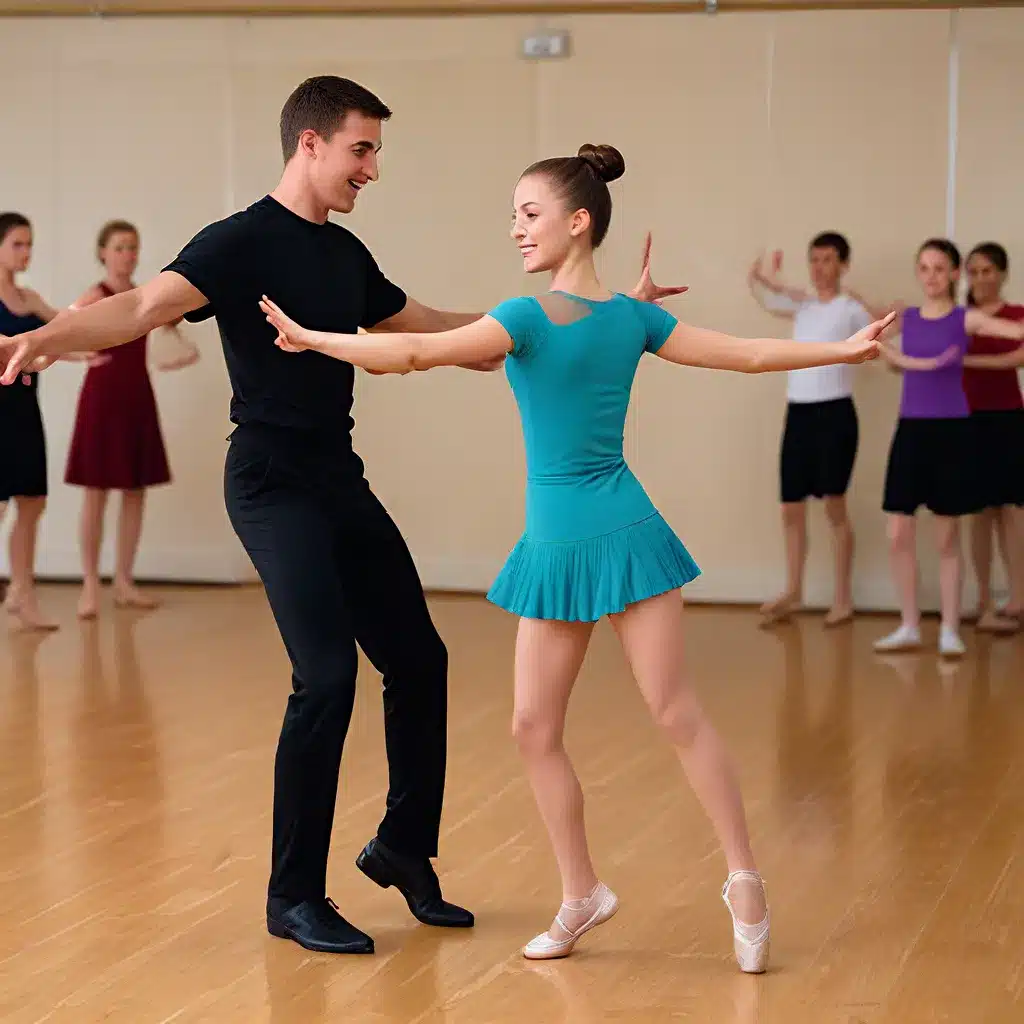
As a lifelong dancer and the director of dance education at the Musical Theater Center, I’ve had the privilege of witnessing the transformative power of dance instruction firsthand. From my early days as a student, stumbling through choreography and dreaming of the spotlight, to my current role guiding the next generation of performers, I’ve learned that there’s far more to successful dance instruction than meets the eye.
The Dance of Teaching: Unlocking the Secrets
Just like the intricate steps and fluid movements of a captivating dance performance, effective dance instruction is an art form in its own right. It requires a delicate balance of technical expertise, creative vision, and a deep understanding of the human element that lies at the heart of the dance experience.
One of the key secrets I’ve uncovered through my years of teaching is the importance of fostering a supportive and inclusive learning environment. As James C. Nieh, the Associate Dean and Professor of Biology at the University of California San Diego, discovered in his research on honeybee communication, social learning and interaction are essential for the development of complex skills. The same principle applies to dance instruction.
By creating a space where students feel safe to experiment, make mistakes, and learn from one another, I’ve found that they not only develop technical proficiency but also cultivate a deep appreciation for the art form. Much like the “teacher-deprived” bees in Nieh’s study, students who lack the guidance of experienced dancers can struggle to master the nuances of movement and communication.
The Art of Adaptation: Embracing Diverse Learning Styles
Another key secret to successful dance instruction is the ability to adapt to the unique needs and learning styles of each student. Just as Nieh discovered that honeybees’ dance dialects can vary based on their environment, I’ve found that the most effective dance instructors are those who can tailor their approach to the individual.
Some students may thrive on visual cues and demonstrations, while others respond better to kinesthetic learning or verbal explanations. By being adaptable and incorporating a variety of teaching methods, I’m able to unlock the full potential of each student, allowing them to develop their unique strengths and overcome their individual challenges.
The Power of Practice: Mastering the Dance
Of course, no discussion of successful dance instruction would be complete without acknowledging the fundamental role of practice. As anyone who has ever attempted to learn a new dance style can attest, it takes time, dedication, and a willingness to push through the inevitable frustrations and setbacks.
But here’s the secret: practice isn’t just about perfecting the physical movements. It’s also about cultivating the mental and emotional resilience required to succeed in the world of dance. Nieh’s research on the bees’ ability to learn from experienced dancers and eventually overcome their own mistakes serves as a powerful reminder that progress often comes through a process of trial and error, with each stumble leading to a deeper understanding and a stronger foundation.
In my experience, the most successful dancers are those who approach practice with a growth mindset, embracing challenges as opportunities for growth and continuously striving to refine their skills. By instilling this mindset in my students, I’ve seen them overcome their fears, develop unshakable confidence, and unlock their full creative potential.
The Importance of Collaboration: Dancing Together
As I’ve delved deeper into the art of dance instruction, I’ve come to realize that one of the most powerful secrets to success lies in the power of collaboration. Much like the bees’ intricate dance language, which allows them to communicate complex information to their nestmates, the art of dance thrives on the exchange of ideas, the sharing of experiences, and the collective energy of a group working toward a common goal.
In my classes, I encourage students to engage in peer-to-peer learning, where they can offer feedback, inspire one another, and even choreograph collaborative pieces. This not only strengthens their technical skills but also fosters a sense of community and camaraderie that is essential for the growth and development of any dancer.
Moreover, I believe that the most impactful dance instruction extends beyond the studio walls, connecting with the broader community and creating opportunities for students to share their passion with the world. Whether it’s through public performances, community outreach programs, or collaborations with local arts organizations, the ability to engage with a wider audience can be a powerful motivator and a source of unparalleled artistic fulfillment.
The Enduring Legacy of Dance Instruction
As I reflect on the secrets I’ve uncovered over the years, I’m struck by the profound impact that dance instruction can have on the lives of students. It’s not just about teaching the technical skills required to execute a perfect pirouette or a seamless pas de deux; it’s about nurturing the human spirit, unlocking creativity, and empowering individuals to express themselves in the most powerful way.
Just as the art of negotiation requires adaptability and a deep understanding of the human element, successful dance instruction is a multifaceted discipline that demands a unique blend of expertise, empathy, and vision. By embracing the secrets I’ve shared and continuously striving to evolve as an educator, I’m honored to play a role in shaping the next generation of dancers and helping them unlock their full potential.
So, whether you’re a seasoned performer, an aspiring dancer, or simply someone who appreciates the beauty and power of movement, I invite you to join me on this journey of discovery. Let’s unlock the secrets of successful dance instruction together and create a legacy of artistic excellence that will inspire generations to come.

